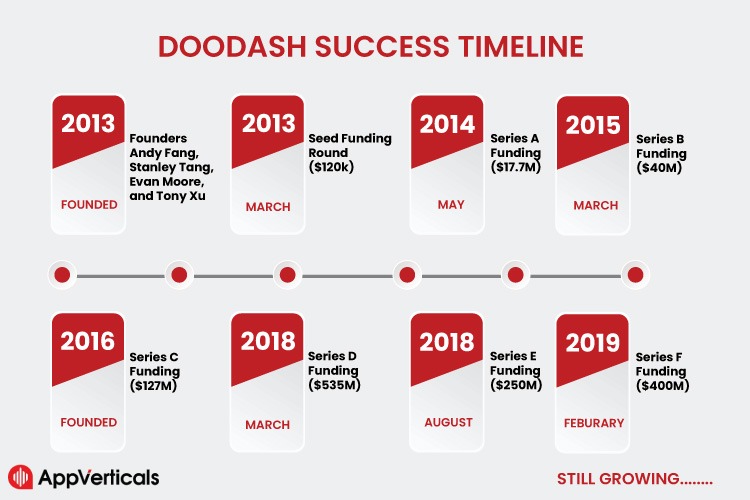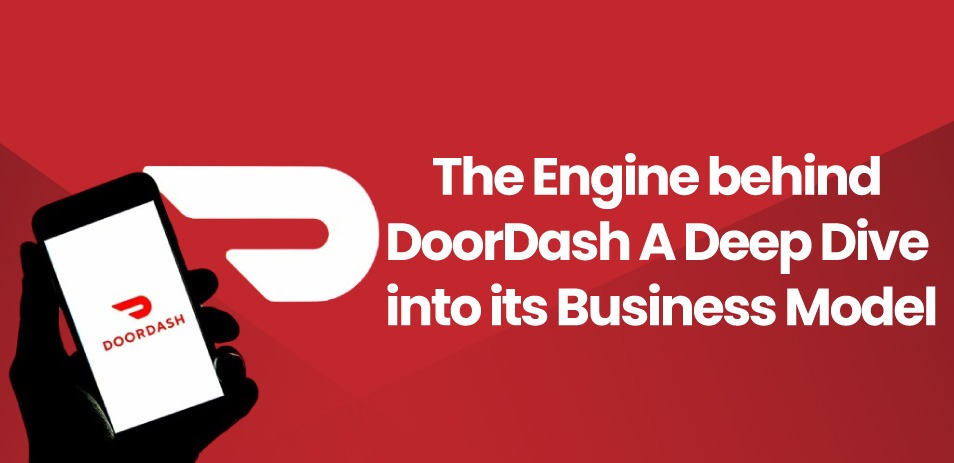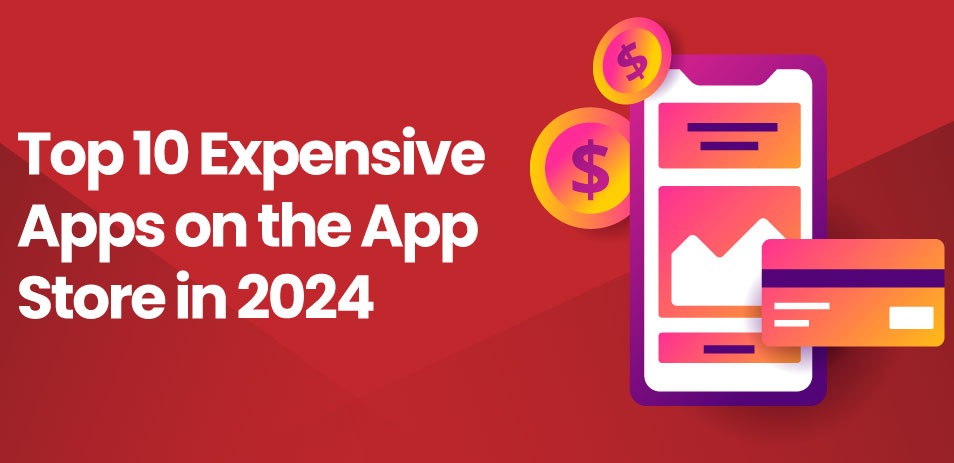DoorDash has emerged as a dominant force in the food delivery industry, revolutionizing how people access their favorite meals. Established in 2013, the company has swiftly carved a niche for itself in the market. Understanding DoorDash’s business model and revenue streams is crucial for several reasons. Firstly, it offers insight into the dynamics of the gig economy and the evolving landscape of food delivery services.
DoorDash’s success story provides valuable lessons for entrepreneurs and businesses looking to thrive in the digital age. By dissecting its revenue sources and operational model, we can uncover the strategies behind its growth and sustainability. This analysis not only sheds light on DoorDash’s trajectory but also provides a glimpse into the future of the on-demand delivery sector.
The gig economy has revolutionized traditional employment models, enabling individuals to work flexibly as independent contractors. In the food delivery sector, this model has seen exponential growth, driven by the convenience-seeking behaviors of consumers. DoorDash operates within this burgeoning landscape, capitalizing on the demand for on-demand food delivery services.
Explanation of DoorDash’s Platform Model
DoorDash operates as an intermediary platform that connects restaurants, delivery drivers (referred to as “dashers”), and customers. Through its user-friendly app and website, DoorDash facilitates seamless transactions between these stakeholders, allowing customers to order from a wide range of restaurants and track their deliveries in real-time.
How DoorDash Connects Restaurants, Dashers, and Customers
Restaurants partner with DoorDash to expand their reach and tap into a broader customer base without investing in delivery infrastructure. Dashers, independent contractors, sign up on the platform to fulfill delivery orders. Customers browse menus, place orders, and make payments through the DoorDash platform. DoorDash orchestrates the entire process, ensuring timely delivery and customer satisfaction while generating revenue through various channels.

Doordash’s Success Can Be Attributed To Several Key Factors
- Its user-friendly platform and intuitive interface provide a seamless experience for both customers and restaurants, making it easy to order and deliver food efficiently.
- DoorDash’s extensive network of restaurant partners ensures a wide variety of options for customers, catering to diverse tastes and preferences.
- The company’s strategic expansion into new markets and its ability to adapt to changing consumer behaviors have fueled its growth.
- DoorDash’s focus on technological innovation, such as AI-driven algorithms for optimizing delivery routes, enhances operational efficiency and customer satisfaction.
- The company’s effective marketing strategies and customer loyalty programs, such as DashPass, contribute to customer retention and brand loyalty.
Ready to revolutionize your business like DoorDash?
Partner with AppVerticals, your trusted mobile app development company.
Yes Let’s goKey Components of DoorDash’s Business Model
Restaurant Partnerships: Collaborating with Restaurants
DoorDash’s success hinges on its extensive network of restaurant partnerships. By teaming up with thousands of eateries across various cuisines and locations, DoorDash offers customers a wide array of dining options. These partnerships not only expand DoorDash’s menu offerings but also enhance its brand visibility and customer base.
Dasher Network: Role of Independent Contractors
The Dasher network forms the backbone of DoorDash’s operations. Independent contractors, known as Dashers, sign up to fulfill delivery orders. They play a pivotal role in ensuring timely and efficient delivery, contributing to customer satisfaction and retention. DoorDash’s flexible earning opportunities and incentives attract Dashers, fostering a reliable workforce essential for its service reliability.
Customer Interface: User Experience and Design
DoorDash prioritizes user experience through its intuitive interface and sleek design. The platform’s user-friendly features streamline the ordering process, allowing customers to browse menus, place orders, and track deliveries seamlessly. By prioritizing convenience and accessibility, DoorDash enhances customer satisfaction and fosters loyalty, driving its continued success in the competitive food delivery market.
DoorDash’s Revenue Streams
Commission Fees: Earning Through Restaurant Partnerships
One of DoorDash’s primary revenue streams is through commission fees charged to restaurants for facilitating orders. DoorDash typically earns a percentage of each transaction made through its platform. This commission fee compensates DoorDash for the delivery service and access to its extensive customer base.
Delivery Fees: Charging Customers for Delivery Services
DoorDash generates revenue through delivery fees charged to customers for the convenience of having their orders delivered to their doorstep. These fees vary based on factors such as distance and demand, contributing to DoorDash’s overall revenue stream.
DashPass Subscription: Subscription-Based Revenue Model
DashPass is DoorDash’s subscription service that offers customers unlimited free delivery and reduced service fees for a monthly fee. Subscriptions provide a steady stream of recurring revenue for DoorDash while incentivizing customer loyalty and increasing order frequency.
Advertising and Partnerships: Additional Sources of Revenue
DoorDash also generates revenue through advertising opportunities and partnerships with restaurants and other businesses. By offering sponsored listings and promotional placements within its app, DoorDash monetizes its platform beyond transactional fees, diversifying its revenue streams. Additionally, DoorDash may collaborate with brands for co-branded marketing campaigns or sponsored events, further enhancing its revenue potential.
Competitive Landscape
The food delivery industry is highly competitive, with several prominent players vying for market share. Among these, DoorDash stands out as a frontrunner alongside competitors like UberEats, Grubhub, and Postmates. Each platform has its strengths and weaknesses, shaping the competitive landscape.
Comparison with Other Food Delivery Platforms
- UberEats: Leveraging its ride-hailing infrastructure, UberEats integrates food delivery seamlessly into the Uber app. It boasts a vast network of drivers and a strong brand presence. However, UberEats primarily focuses on urban areas and may lack the same depth of restaurant partnerships as DoorDash in some regions.
- Grubhub: Grubhub has a long-established presence in the food delivery market, with a focus on providing a comprehensive platform for online food ordering. It offers features like loyalty programs and restaurant reviews. However, Grubhub’s delivery network may not be as extensive as DoorDash’s in certain markets.
- Postmates: Acquired by UberEats in 2020, Postmates operates as a standalone brand. It differentiates itself by offering delivery from various merchants beyond restaurants, including grocery stores and convenience stores. Postmates’ emphasis on convenience and versatility presents both opportunities and challenges in competing with DoorDash.
Unique Aspects of DoorDash’s Business Model
DoorDash distinguishes itself through several unique aspects of its business model:
- Focus on Suburban Markets: Unlike some competitors that primarily target urban areas, DoorDash has strategically expanded into suburban and rural markets, tapping into previously underserved areas and widening its customer base.
- Restaurant-Friendly Approach: DoorDash prioritizes building strong partnerships with restaurants, offering flexible commission structures and support services to help businesses thrive on its platform. This emphasis on collaboration fosters long-term relationships and loyalty among restaurant partners.
- Innovative Technology: DoorDash invests heavily in technology, leveraging data analytics and AI-driven algorithms to optimize delivery routes, predict demand, and enhance the overall customer experience. This technological prowess enhances operational efficiency and sets DoorDash apart in the industry.
- DashPass Subscription: DoorDash’s subscription-based model, DashPass, sets it apart by offering customers unlimited free delivery and reduced service fees for a monthly fee. This subscription service enhances customer loyalty and encourages repeat usage, contributing to DoorDash’s revenue diversification strategy.
Challenges and Opportunities
Regulatory Challenges in the Food Delivery Industry
The food delivery industry operates within a complex regulatory landscape, presenting various challenges for platforms like DoorDash. Some of the key regulatory issues include:
- Labor Laws and Gig Economy Regulations: Regulatory scrutiny surrounding the classification of delivery drivers as independent contractors versus employees poses a significant challenge. Compliance with labor laws and regulations related to wages, benefits, and working conditions is essential for DoorDash to navigate potential legal challenges and maintain its operational model.
- Restaurant Regulations: Local regulations governing food safety, hygiene standards, and licensing requirements may vary across different markets. DoorDash must ensure compliance with these regulations to protect the health and safety of customers and uphold the reputation of its platform.
- Fee Caps and Price Regulations: Some jurisdictions have implemented fee caps or restrictions on the commissions that food delivery platforms can charge restaurants. Adapting to these regulations while maintaining profitability is a balancing act for DoorDash.
Market Expansion and Growth Opportunities
Despite the regulatory challenges, the food delivery industry presents significant growth opportunities for DoorDash:
- International Expansion: DoorDash has primarily focused on the North American market, but there is ample opportunity for international expansion. Venturing into new markets abroad, particularly in densely populated urban centers with a growing demand for food delivery services, can fuel DoorDash’s growth trajectory.
- Partnerships and Acquisitions: Strategic partnerships with local restaurants, national chains, and other businesses can strengthen DoorDash’s market presence and expand its customer base. Additionally, targeted acquisitions or mergers with complementary businesses could enhance DoorDash’s offerings and accelerate its growth.
- Diversification of Services: Beyond traditional restaurant delivery, DoorDash can explore opportunities to diversify its services. This could include grocery delivery, alcohol delivery, or partnerships with non-food merchants, tapping into new revenue streams and catering to evolving consumer preferences.
- Technological Innovation: Investing in technological innovation, such as autonomous delivery vehicles, drone delivery, or predictive analytics, can enhance DoorDash’s operational efficiency and improve the overall customer experience, positioning the company for sustained growth in a competitive market.
Expansion Plans and Strategies
DoorDash’s future outlook is characterized by ambitious expansion plans and strategic initiatives aimed at solidifying its position as a market leader in the food delivery industry:
- Geographical Expansion: DoorDash is poised to continue its geographical expansion beyond its core markets in North America. Targeting both domestic and international markets, DoorDash aims to penetrate new regions, particularly in densely populated urban areas with high demand for food delivery services.
- Suburban and Rural Focus: Recognizing the potential for growth in suburban and rural markets, DoorDash will continue to prioritize expansion into these underserved areas. By catering to a broader demographic and offering delivery services to customers outside of urban centers, DoorDash can tap into new revenue streams and capture market share.
- Strategic Partnerships and Acquisitions: DoorDash will pursue strategic partnerships with restaurant chains, local eateries, and other businesses to strengthen its market position and expand its customer base. Additionally, targeted acquisitions or mergers with complementary businesses could enhance DoorDash’s offerings and accelerate its growth trajectory.
Potential Innovations and Adaptations
Innovation is at the heart of DoorDash’s future strategy, with a focus on leveraging technology and adapting to evolving consumer preferences:
- Technological Advancements: DoorDash will continue to invest in technological innovation to enhance its operational efficiency and improve the overall customer experience. This includes advancements in AI-driven algorithms for route optimization, predictive analytics for demand forecasting, and automation of delivery processes.
- Diversification of Services: Beyond traditional restaurant delivery, DoorDash will explore opportunities to diversify its services and offerings. This may include expanding into adjacent markets such as grocery delivery, alcohol delivery, or partnerships with non-food merchants, catering to a broader range of consumer needs.
- Sustainability Initiatives: With an increasing emphasis on sustainability and environmental responsibility, DoorDash may introduce initiatives to reduce its carbon footprint and promote eco-friendly practices. This could involve initiatives such as electric vehicle fleets, packaging optimization, and partnerships with sustainable suppliers.
Ready to streamline operations, engage customers, and boost profits?
et’s build your DoorDash-inspired app together! Reach out to us today and let’s bring your vision to life.
Yes Let’s goConclusion
In a world where convenience reigns supreme, DoorDash has emerged as a trailblazer in the food delivery industry, reshaping the way we dine and defining the future of on-demand services. Through a combination of innovative technology, strategic partnerships, and a relentless focus on customer satisfaction, DoorDash has solidified its position as a market leader, setting new standards for efficiency, reliability, and accessibility.
As we’ve delved into DoorDash’s business model and revenue sources, it’s clear that the company’s success is no accident. From its seamless platform connecting restaurants, dashers, and customers to its diverse revenue streams encompassing commission fees, delivery charges, and subscription models, DoorDash has built a robust ecosystem that thrives on collaboration and innovation.
As consumers, entrepreneurs, and industry observers, we can look to DoorDash as not just a food delivery platform, but a symbol of innovation, adaptability, and the limitless possibilities of the digital age. Whether it’s satisfying our cravings, supporting local businesses, or driving economic opportunities for gig workers, DoorDash has left an indelible mark on the way we eat, work, and live. And as we eagerly anticipate what lies ahead, one thing is certain: DoorDash will continue to shape the future of food delivery and redefine the meaning of convenience in our everyday lives.
Are you looking to build your own on-demand delivery platform? Contact us, the leading OnDemand app development company, to turn your vision into reality!
FAQs
How does DoorDash make money?
DoorDash makes money primarily through commission fees from restaurants, delivery fees from customers, DashPass subscription revenue, and advertising/partnerships.
How much does DoorDash make?
DoorDash’s revenue varies, but as a publicly traded company, its financial reports detail earnings. Specific figures can be found in DoorDash’s latest financial disclosures and earnings reports.
How does DoorDash work for customers?
Customers use the DoorDash app or website to browse menus, place orders from restaurants, and pay online. Dashers then pick up the orders and deliver them to customers’ doorsteps, who can track their orders in real-time through the app.








